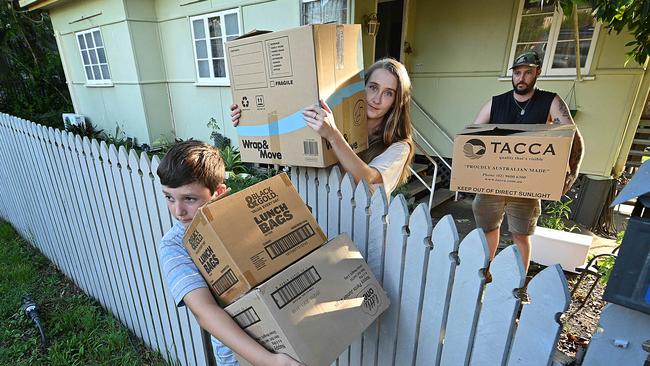No vacancy: Australia’s rental crisis worsens
New figures show the number of Australia’s rental properties has fallen to a decade low, causing asking rents are soaring through the roof.

The rental squeeze is hitting hard across the country, worsened by the pandemic-inspired flight from the inner cities and the rush of investors to sell in the hot property market.
New figures show the number of Australia’s rental properties has fallen to a decade low and, where there are available houses or units, the asking rents are soaring.
Workers are being forced out of the areas where they have jobs and, in some towns and suburbs with no properties for rent, homelessness is a real possibility.
At least 25 locations around the country had little or no properties available at the end of last month, according to new data from research firm SQM Research compiled for The Weekend Australian.
The West Australian town of Dunsborough, near the coastal tourism city of Busselton, has no vacancies. In the wider Busselton region, there are only four properties advertised.
Queensland’s Sunshine Coast has struggled for more than a year to meet rental demand, as it became a hotbed destination for interstate migration. But inland in Gympie and Nambour – which traditionally take the spill-over for renters moving to the coast – there are only 20 available properties in and around the towns. Similarly, NSW’s Orange and Ballina have the choice of 10 properties each.
Just 1.6 per cent of the national pool of rental property was vacant throughout October, representing 56,953 on the market nationwide. But most of the availability is in the capitals, where fewer international students and less migration has helped vacancy rates in Sydney and Melbourne CBDs, now at 7.5 per cent and 8 per cent, respectively.
Sunshine Coast couple Shontay Sommerville, 27, and Bryce Poulsen, 34, have been “experiencing the nightmare” of trying to find a place to live for themselves and his 11-year-old son, Scott.
Ms Sommerville, a cleaner, and Mr Poulsen, a truck driver, have applied for 50 rental properties over the past three weeks after recently selling their Nambour house to move closer to family in the coastal community of Maroochydore.
As the couple were being photographed for The Weekend Australian, they received a phone call that their last application was successful – just four days from having to move out of their home.
Ms Sommerville said it had been a desperate few weeks and the only explanation real estate agents could offer for why they kept missing out was that there were too many people in the same position.
She said she had even considered fly-in, fly-out work in Queensland’s mines to boost their collective income and be able to pay top price to get a property.
SQM managing director Louis Christopher said it was unlikely Australia’s rental market would return to steady, healthy vacancy rates of about 3 per cent.
He said there might be some relief in the short term but that the demographic changes seen during the pandemic were permanent.
“I do see some relief next year because I think there will some people who will move back to the cities, probably enough to create a bit of a correction in the rents in these areas,” Mr Christopher said. “But long term there is this underlying change in trend that’s going on and I think it’s accelerating towards living in regional Australia.”
Lack of housing also has broader implications on employment and economic activity by way of locking out skilled or seasonal workers, said Macquarie Bank senior economist Justin Fabo.
“If you need to move or get work in a particular region and there is no accommodation, that is a big problem in terms of restricting economic activity in that region,” he said. Rental moratoriums introduced at the start of the pandemic have ended around the country, allowing landlords to take advantage of demand. Asking rents for houses have risen 10.5 per cent in the past year to $537 a week. Unit rents have also increased 9 per cent to $412 a week. Some of the areas with no vacancy have had rental rises of as much as 40 per cent.




To join the conversation, please log in. Don't have an account? Register
Join the conversation, you are commenting as Logout